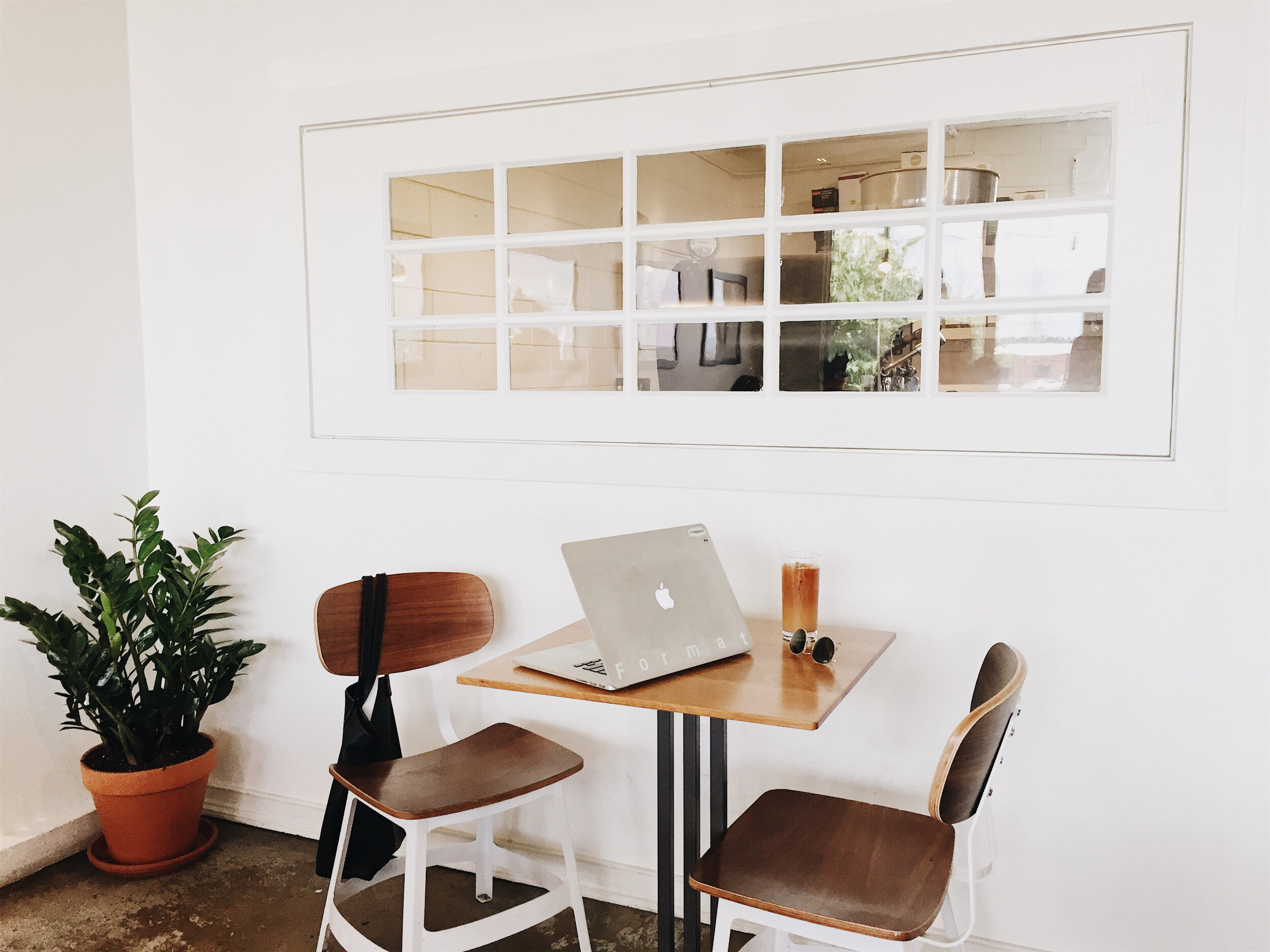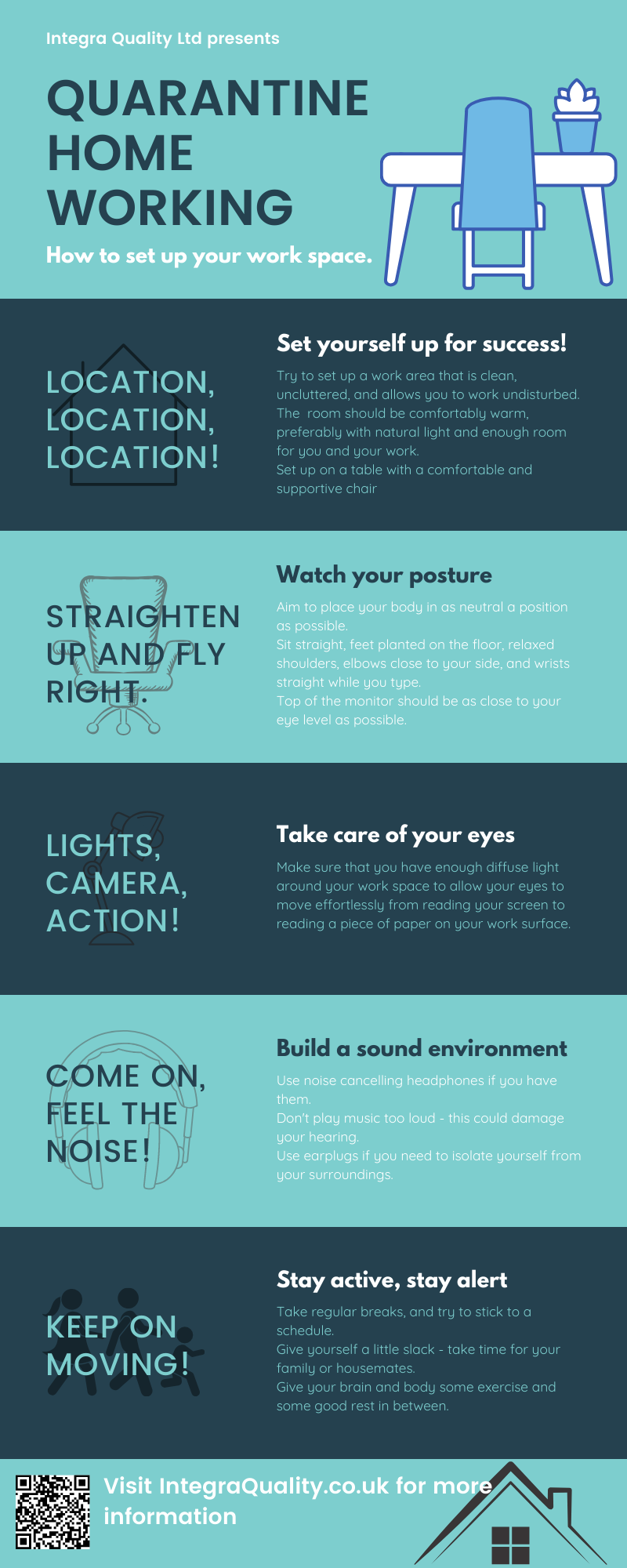
The switch from our lovely ergonomic desks at the office to the makeshift space at home can be a big change for our bodies to get used to. Although it doesn't cause a problem for most in the short term, it's worth taking steps to make it the best possible situation. The current quarantine may last for quite a while, and the longer we sit in an uncomfortable space, the more likely it is to affect us. The aim is to reduce the stress that comes along with the uncertainty of our current situation, and allow you to be as productive as possible. Neck ache, back ache, tension headaches, eye fatigue and carpal tunnel syndrome can all make working at home even more stressful than it already is, so read on to see some top tips for setting up your home work space!
Location, Location, Location!
The first decision you'll have to make is where to set up your workspace. Look for a space that you'll feel comfortable in. For some of you, that means a quiet space, away from distractions and interruptions. Others like to have the general hubbub of life going on in the background. Either way, the room should be comfortably warm, preferably with natural light and enough room for you and your work.
Ideally, you should set up on a table with a comfortable and supportive chair. The table should have enough room to spread out the materials you'll need to work, so you're not contorting yourself to read documents while typing on your computer!
You might find that you need to make use of different spaces at different times to maintain your productivity.
Straighten up and Fly Right.
For most of us, our location will not be ideal: the dining table might be too tall to sit comfortably, or the armchair might be too narrow to let us balance our files while we type them up on the laptop. Do what you can to make life easier on yourself.
The aim is to place your body in as neutral a position as possible. Aim to sit with your back straight and your feet planted on the floor, with your whole body facing your screen. The top of your screen should be as close to your eye level as possible. Your keyboard should be in front of your screen, at the right height to allow your shoulders to be relaxed, with your elbows close to your side and your wrists straight while you type.
It is not always easy to achieve this neutral position, but there are things that can help. Pick the right chair, to allow your feet to sit comfortably planted on the ground. Laptops can be a great source of discomfort if you are using them constantly, as the screen is very low, the keyboard is flat, and the touchpad requires your wrists to move in an uncomfortable manner. I have found that a laptop riser helps no end, and a separate keyboard and mouse solves most of the rest of my problems.
If you can get plugged in to an external monitor, then that gives you the added benefit of separate height adjustment through the use of a strategically placed box under the monitor!
If you want to use a more formal checklist to sort out your workspace, you can use the Workstation checklist from the HSE here: https://www.hse.gov.uk/pubns/ck1.pdf
Lights, Camera, Action!
Working on a screen all day can be very tiring for your eyes, especially when there is a big difference between the light levels of your environment and your screen. Try to make sure that you have sufficient diffuse light around your workspace to allow your eyes to move effortlessly from reading your screen to reading a piece of paper on your work surface.
Good lighting will also help you to get the most out of video conferencing, as the computer is not having to work as hard to get a good picture from your camera. It helps a lot if the person on the other end of the call can see you as you speak to them!
Come On, Feel the Noise!
Many of us like to work with music, and depending on the environment that might necessitate the use of headphones. If you find yourself working in the living room, you might find yourself trying to drown out the noise with music. Try to avoid that temptation, as this can lead to you being exposed to dangerous noise levels for long periods of time (not to mention the potential arguments when your family realise you haven't been listening to them!).
Invest in a set of noise cancelling headphones, or make judicious use of earplugs to give yourself a comfortable sound environment. You only get one set of ears, and it's worth protecting them - even if you have already damaged them with rock concerts in your youth!
Keep on Moving!
The most often forgotten and simplest thing you can do to keep yourself healthy and sane while working from home is to give yourself a break. It is tempting to work longer, and to miss or shorten your breaks. We often feel guilty or frustrated that we haven't achieved as much as we thought we were going to now we are working from home. It's important to give yourself a little grace to begin with, as you are adjusting to a major change in how you work!
It can also be hard if your partner is trying to work from home alongside you, particularly if there are children home from school too. We often have very different work styles, and expect our partner to know our working needs intuitively. This can lead to clashes when a child needs one of you to interrupt your work, or when your partner wants to synchronise breaks with you.
Take a little time to work out a schedule for yourself. If you have a partner working with you, discuss each other's priorities and boundaries, and agree who will do what, and when. If everyone knows your goals, you're more likely to be able to achieve them.
Make good use of your downtime, as well. Make sure that you are giving your brain time to rest and recuperate between tasks. Get up and about every couple of hours to keep your blood flowing. All it takes is a walk to the kitchen to make a cup of tea to give you a chance to breathe and regroup.
Conclusion
Hopefully, that has given you some useful pause for thought. If you find yourself wanting some advice, or even a friendly chat, please get in touch, and I will do what I can to help. You can find my contact details on my website at https://integraquality.co.uk/
I look forward to hearing from you!
 </div<></figure
</div<></figure</div
